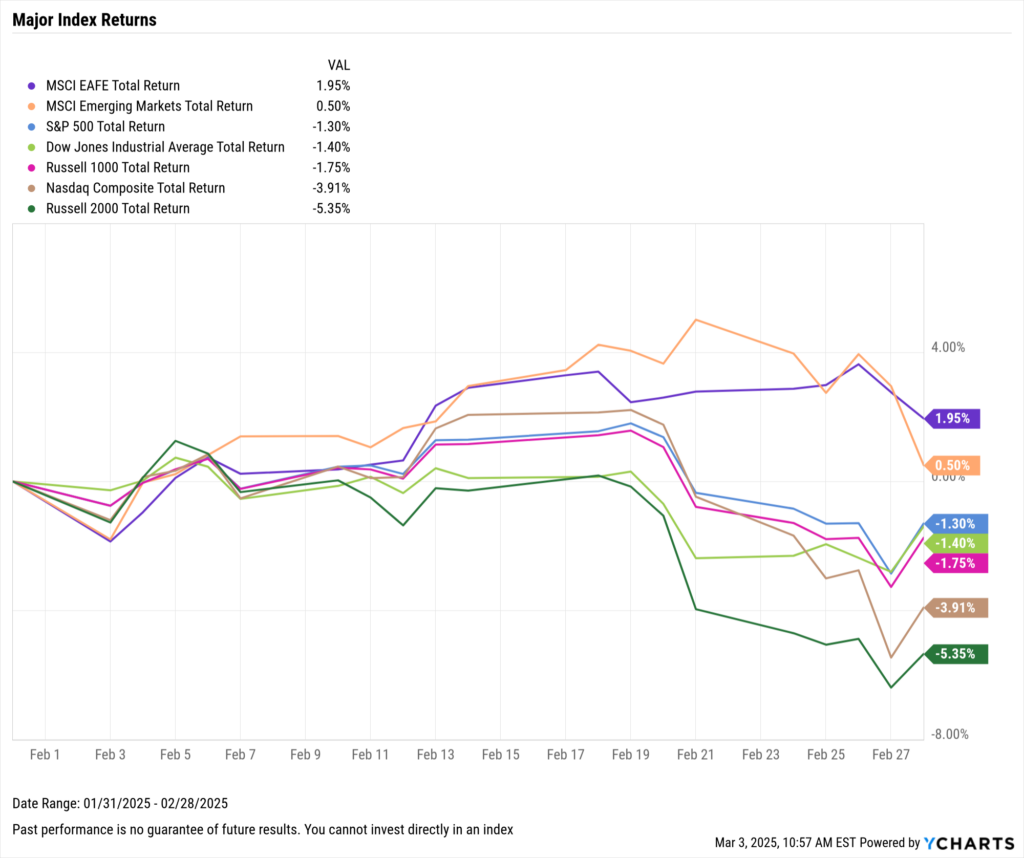
The first half of 2025 has been anything but dull, and uncertainty still has many scratching their heads trying to plan their next moves. Yet, many investors with broadly diversified long-term investment strategies have ended a volatile 2nd quarter with positive returns.
Gold led established asset classes in year-to-date returns, rising 26%, followed by foreign stocks, which rose about 20%. The S&P 500, which measures U.S. stocks, ended with a positive 6%. The lagger for the period was U.S. small-cap stocks, represented by the Russell 2000, down -2%. Depending on the duration, bonds increased by 3 to 5 percent. However, a story of a wild 90 days of price swings can be found within these numbers: the S&P 500 fell 19% from its peak on February 19, only to recover 24% from the depths of the tariff-induced selloff in April. Investors went from being excited about deregulation to being hopeless about a global trade war and finally feeling relieved that the Trump tariffs might not be as burdensome as they had initially feared. There are still obvious dangers that the data have not yet been affected by the initial tariffs, which are currently suspended. Some believe it is only a matter of time before tariffs harm economic growth, rekindle inflation, lead to higher unemployment, and weigh on corporate earnings.
Others believe that economic activity will remain resilient, labor will hold up, and inflation will not move higher. Additionally, significant tax and spending legislation is presently being debated in Congress and has the potential to affect investors, business activity, and the markets. U.S. stocks hardly look cheap, with the S&P 500 trading at 22 times the projected 12-months earnings compared to the 10-year average of 19 times. However, a number of stocks are moving higher, with more rising than falling. This is often seen as a sign of a healthy stock market worthy of sustained upward momentum.
Can you take all the data and make a reliable prediction for the second half of the year? As Dr. Burton Malkiel once said, “Forecasts are difficult to make – particularly those about the future.” We won’t make a prediction. There are always reasons not to invest, but as history has shown, markets move higher over time. We believe that financial markets are efficient and reward investors willing to live through the ups and downs with higher stock prices in the future.




